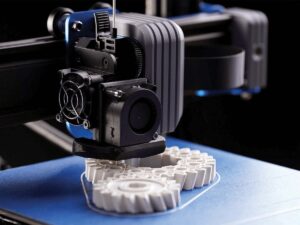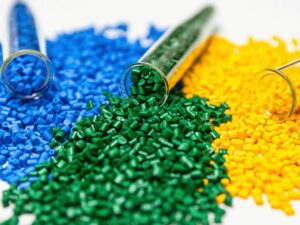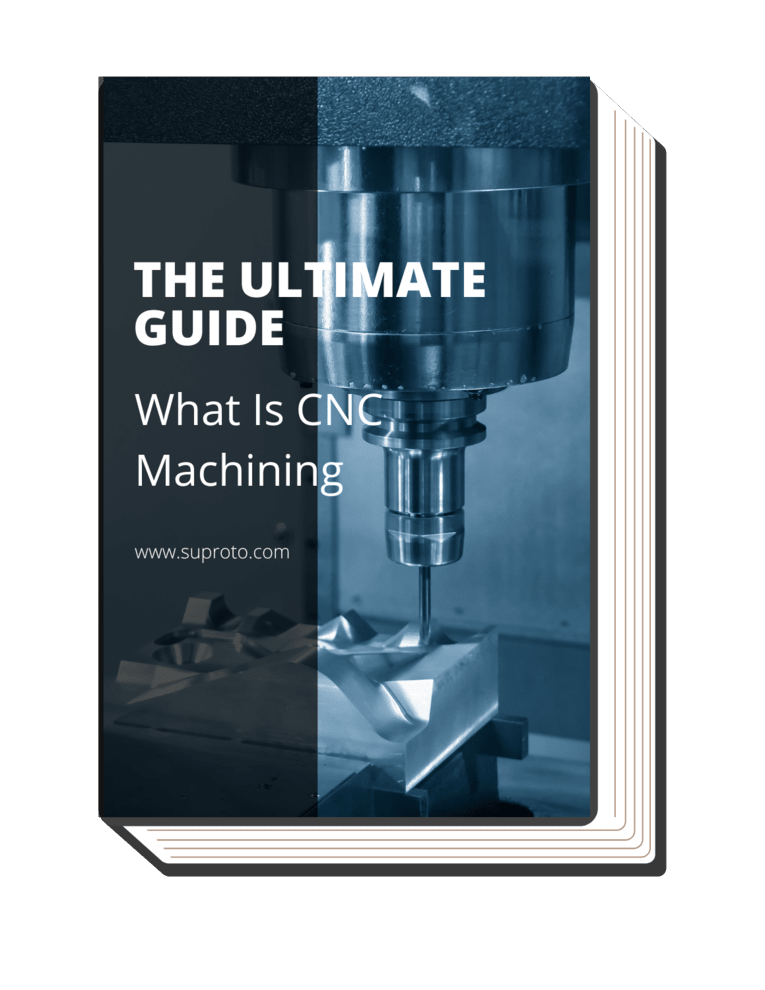Wondering how intricate 3D objects are brought to life right before your eyes? The answer lies in a revolutionary technology called Fused Deposition Modeling (FDM) 3D Printing, the cornerstone of modern additive manufacturing. However, the question that naturally arises is, “What is FDM 3D Printing?”
Simply put, FDM 3D Printing is an additive manufacturing process that constructs three-dimensional objects layer by layer by selectively depositing melted material in a predetermined path, using thermoplastic polymers. I encourage you to stay with me as we unveil through this article the fascinating world of FDM 3D printing and learn how it’s redefining traditional manufacturing processes.
So, without further a do, let’s dive in!
1. A Brief Overview of 3D Printing Technology
3D printing, also known as additive manufacturing, has significantly evolved since its inception in the 1980s. This technology involves creating three-dimensional objects from a digital model by laying down successive layers of material. The process begins with designing a 3D model for computer software, which is then divided into thousands of horizontal layers.
A 2019 report by Deloitte highlights the accelerated growth of the 3D printing market, estimating it to reach $35.6 billion by 2024, which is a testament to technology’s expanding reach and potential. According to the report, this robust growth is driven by the flexibility and customization that 3D printing offers over traditional manufacturing processes.
As a 3D printing expert, I’ve observed firsthand how this technology has transformed the concept of manufacturing. It’s not just about mass production anymore; it’s about customization, flexibility, and speed. Businesses can now make more informed decisions about their design processes, leading to optimized products and improved efficiency.
2. Advantages of FDM 3D Printing
Let’s delve into the primary benefits that FDM 3D printing offers. This revolutionary technology has several distinguishing advantages that make it a preferred choice for businesses and individuals alike. Below are the list of advantages:
Cost-Effectiveness and Accessibility
FDM 3D printers are among the most affordable types of 3D printers on the market, making them accessible to a wider range of users. The materials used, generally thermoplastics, are also comparatively less expensive. Moreover, their maintenance cost is usually low, making them a cost-effective solution for various applications.
Versatility and Material Options
FDM 3D printing supports a wide variety of thermoplastic materials, each with different mechanical properties and applications. This versatility enables the creation of a wide range of objects, from prototypes to final products, catering to various sectors like aerospace, medical, automotive, and more.
Rapid Prototyping Capabilities
FDM technology enables rapid production of prototypes, allowing businesses to accelerate their design process and reduce time-to-market. The speed and efficiency of FDM 3D printing help businesses outpace competition and rapidly respond to market changes. I have witnessed the ability to swiftly transform a concept into a physical object for analysis and improvement has proven to be a game-changer in numerous projects.
Customization and Personalization
One of the standout advantages of FDM 3D printing is its ability to create highly customized products. Having worked extensively with FDM 3D printers, I can attest to the incredible benefits of customization in different applications. From personalized merchandise to patient-specific medical implants, the opportunities for customization are endless.
Sustainability and Eco-Friendliness
The U.S Department of Energy estimates that additive manufacturing reduces energy use by 25% and can cut waste and materials costs by up to 90%, compared to traditional manufacturing methods. FDM 3D printing is also appreciated for its eco-friendly approach. It operates on an additive principle, meaning it uses only the material needed to construct an object, reducing waste significantly.
3. Materials for FDM 3D Printing
Materials play a pivotal role in determining the success of an FDM 3D printing project. Here, we will discuss some of the most commonly used materials in FDM 3D printing.
PLA (Polylactic Acid)
PLA is one of the most popular materials for FDM 3D printing, thanks to its easy printability and biodegradability. It’s derived from renewable resources like cornstarch or sugarcane, making it an eco-friendly choice. And the best part is that PLA prints at a lower temperature and generally doesn’t warp, making it ideal for beginners and applications that do not require high strength.
ABS (Acrylonitrile Butadiene Styrene)
ABS is a durable and impact-resistant plastic that’s widely used in FDM 3D printing. Counting the years, I’ve had the privilege of working with a kinf of material. Wherein it offers higher temperature resistance and strength than PLA, making it suitable for more demanding applications. However, it requires a heated print bed to prevent warping and may produce unpleasant fumes during printing.
PETG (Polyethylene Terephthalate Glycol)
PETG combines the ease of use of PLA with the strength and durability of ABS. It is known for its excellent layer adhesion, dimensional stability, and resistance to water and UV light, making it a popular choice for a variety of applications. For example, I once used PETG to create water-resistant containers for a client in the food industry, demonstrating its excellent resistance properties.
4. FDM 3D Printing in Various Industries
The incredible versatility and adaptability of FDM 3D printing make it a game-changer in numerous industries. From automotive to culinary arts, FDM’s potential applications are vast and continually expanding. Let’s delve into how FDM 3D printing has revolutionized various sectors.
Automotive and Aerospace
FDM 3D printing is a boon for the automotive and aerospace industries, allowing for the rapid production of lightweight, complex parts, and prototypes. According to a report by Market US, the global automotive 3D printing market size is expected to be worth around USD 15.8 Billion by 2032, growing at a CAGR of 22.4% from 2022 to 2032.
FDM 3D printing reduces the production time and costs associated with traditional manufacturing methods. Moreover, it facilitates the production of custom components, enhancing the overall efficiency and performance of vehicles and aircraft.
Architecture and Construction
Architects and construction professionals leverage FDM 3D printing to create accurate, detailed scale models and prototypes. It allows for a better visualization of architectural designs and aids in detecting potential design flaws early in the planning stage. Moreover, there’s growing interest in using FDM 3D printing for constructing actual buildings and infrastructure.
Consumer Goods and Electronics
From smartphone cases to custom toys, FDM 3D printing is reshaping the consumer goods and electronics industries. Also, it’s increasingly being used to manufacture final products, ushering in an era of mass customization. I’ve been particularly impressed with its applications in the electronic field, where I’ve helped design and print specific gadget parts, significantly improving its outcomes.
Fashion and Jewelry
In the fashion and jewelry industry, FDM 3D printing offers exciting possibilities for creating unique, personalized items. It can produce intricate designs that would be difficult, if not impossible, to achieve with traditional methods. Designers are using this technology to create everything from custom jewelry to avant-garde clothing.
Food and Culinary Arts
FDM 3D printing is even finding applications in the food industry, enabling the creation of complex, edible designs. This technology can be used to create custom shapes and patterns in foods like chocolate, dough, and other edible materials.
In my professional experience, the impact of FDM 3D printing on food and culinary has been transformative. It’s particularly popular in high-end gastronomy, where chefs utilize it to craft unique culinary creations.
5. The FDM 3D Printing Process
FDM 3D printing is a multi-step process, each with its own significance and role in producing the final product. It starts with a digital 3D model and ends with a physical object, brought to life through the precise deposition of heated material. As a long-time expert in this industry, I can affirm that understanding each step in depth is key to mastering this technology. Here are the following:
Step#1 Preparing the 3D Model
The process starts with a 3D model, typically created using CAD software. The model needs to be exported to a format compatible with the 3D printer, usually STL or OBJ. Then, it goes through a process called “slicing,” which divides the model into thin horizontal layers for the printer to build one by one. Studies have found that the precision of slicing can significantly influence the print’s quality and accuracy.
Step#2 Material Selection and Preparation
The choice of material depends on the intended use of the final product. Each material has distinct properties like strength, flexibility, and temperature resistance. Before printing, the material is loaded into the printer and heated until it reaches a semi-liquid state.
Step#3 Layer-by-Layer Deposition
The printer extrudes the heated material through a nozzle, depositing it layer by layer on the print bed. The material hardens almost instantly upon contact with the cooler surface. Suproto harnessed this technique to deliver intricate designs with precision and accuracy. This is repeated layer by layer until the object is complete.
Step#4 Support Structures and Infill
For overhangs and bridges in the model, support structures are printed along with the object. These are removed after printing. The infill density and pattern, which affect the object’s weight and strength, can be adjusted according to the requirement.
Step#5 Post-Processing and Finishing
Once the printing is done, the object is left to cool down. Support structures, if any, are then removed. Personally, I’ve found that devoting time to post-processing and finishing can drastically improve the final product’s look and feel. Additional finishing steps like sanding, painting, or sealing can be carried out to enhance the appearance and durability of the printed object.
6. 4 Tips and Best Practices for Successful FDM 3D Printing
Now that we understand the FDM 3D printing process, it’s crucial to learn about the best practices to ensure successful prints. The world of FDM 3D printing offers immense creative possibilities, but to unleash its full potential, one must pay attention to several aspects. Here are some practical tips that I’ve picked up in my years as a selective laser melting expert.
#1 Preparing 3D Models for Printing
A well-prepared 3D model is crucial for successful printing. Always ensure that the model is watertight, meaning it has no holes or non-manifold edges. Simplify the model as much as possible to avoid unnecessary complexities that might cause issues during printing. Applying mesh repair algorithms to your 3D models can significantly improve the success rate of 3D printing.
#2 Optimizing Print Settings and Parameters
Parameters such as layer height, print speed, and temperature can greatly affect the print quality. With Suproto’s knowledge and expertise, it can guide users to fine-tune these parameters for achieving the best possible outcomes. Test different settings and keep track of the results to determine the optimal configuration for your specific printer and material.
#3 Troubleshooting Common Issues
3D printing is not without its challenges. Issues such as warping, stringing, and layer separation are common. Learning to troubleshoot these problems will go a long way in ensuring successful prints. Implementing a quality monitoring system can significantly reduce the occurrence of these common issues.
The table provides an overview of common 3D printing issues such as warping, stringing, layer separation, and offers numbered troubleshooting tips to address these problems, along with the importance of implementing a quality monitoring system for successful prints.
| Common Issues |
Description |
Troubleshooting Tips |
| Warping |
Warping occurs when the printed object lifts or curls at the edges |
1. Ensure the print bed is clean and level
2. Use a heated bed or apply adhesive such as hairspray or glue stick to improve adhesion
3. Enclose the printer to maintain a consistent temperature
|
| Stringing |
Stringing refers to thin strands of filament between printed parts |
1. Optimize retraction settings in the slicing software
2. Increase travel speed to reduce the chance of filament oozing
3. Check the nozzle temperature and adjust if necessary
|
| Layer Separation |
Layer separation occurs when individual layers of the print do not adhere properly |
1. Ensure proper adhesion between layers by adjusting the print bed temperature or using a suitable adhesive
2. Check filament quality and moisture content; use dry filament
3. Verify that the printer is not overextruding; calibrate the extruder steps/mm value
|
| Quality Monitoring System |
Implementing a quality monitoring system can help prevent and detect common issues |
1. Install a webcam or camera system to monitor prints
2. Use slicing software with built-in error detection and correction features
3. Employ filament sensors to detect filament runout and pause the print to prevent failed prints
4. Regularly inspect and maintain the printer, including cleaning the nozzle and checking for loose belts or misaligned components
|
#4 Maintaining and Calibrating the 3D Printer
Regular maintenance and calibration of the 3D printer are vital for consistent results. Clean the extruder and print bed regularly, lubricate the moving parts, and periodically check the alignment of the axes. In my professional practice, I always emphasize the importance of maintaining your 3D printer. Proper calibration can significantly improve the print quality and prolong the life of the printer.
7. 7 Factors To Consider When Selecting an FDM 3D Printer
Choosing the right FDM 3D printer for your needs is a significant decision that can greatly influence your 3D printing experiences and outcomes. There are several factors to consider, each playing a distinct role in the printer’s overall performance and suitability for your specific applications. As a professional in this field, I believe that a comprehensive understanding of these factors is fundamental in making an informed choice.
#1 Print Resolution and Accuracy
The print resolution, measured in microns, determines the level of detail a printer can produce. The lower the micron number, the higher the resolution and the finer the details.
According to 3D Print Schooling, the 3D printer height capability varies, ranging between 10 microns and 300 microns, depending on your 3D printer size. Accuracy, on the other hand, refers to how closely the printed object matches the original 3D model.
#2 Build Volume and Size Limitations
The build volume dictates the maximum size of the object that a printer can produce. Therefore, if you plan to print larger objects, there is a need for a printer with a larger build volume. Conversely, for smaller, more detailed objects, a printer with a smaller build volume may suffice.
#3 Filament Compatibility and Material Options
Different printers support different types of filaments. While some printers are designed to work with a wide range of materials, others might be limited to specific filament types. Therefore, the intended use of your printed objects should guide your choice of printer in terms of filament compatibility.
#4 Printing Speed and Efficiency
The printing speed, measured in millimeters per second (mm/s), determines how fast the printer can deposit material. However, there is often a trade-off between speed and quality – printing faster can result in lower quality prints. Efficiency also takes into account factors like power consumption and material use.
#5 Connectivity and User Interface
Modern 3D printers offer various connectivity options, examples are the USB, SD card, and even Wi-Fi. As what I have noticed, giving due attention to this factor gives guidance in choosing an FDM 3D printer that best aligns with the business’ needs and expectations. The user interface, whether it’s a touchscreen or dial-controlled, should be intuitive and easy to use.
#6 Upgradability and Expandability
Some 3D printers offer the ability to upgrade or expand with additional features or components over time. This could include adding a heated bed, upgrading the extruder, or installing a dual extruder. A case in point is when I had to select a printer for large prototypes, and my focus on building volume led me to a model that served me well for years.
#7 Manufacturer’s Reputation and Customer Support
The manufacturer’s reputation can give you an idea of the printer’s quality. Good customer support, including detailed manuals, online resources, and responsive customer service, is crucial, especially for beginners.
Dive Deeper Into Our Resources
Looking for more diverse service options? Browse through our handpicked selections:
Still haven’t found what you’re looking for? Don’t hesitate to contact us. We’re available around the clock to assist you.
Conclusion
Navigating the landscape of FDM 3D printing can be complex, but understanding its potential and the factors to consider when embarking on this journey can offer transformative outcomes. As a seasoned professional in this field, I find immense satisfaction in leveraging this technology to turn ideas into tangible reality.
If this exploration of FDM 3D printing has piqued your interest, don’t hesitate to dive deeper. Please feel free to contact us for further information, tailored advice, or to address any queries you may have. The world of 3D printing is wide open and waiting for your exploration.






